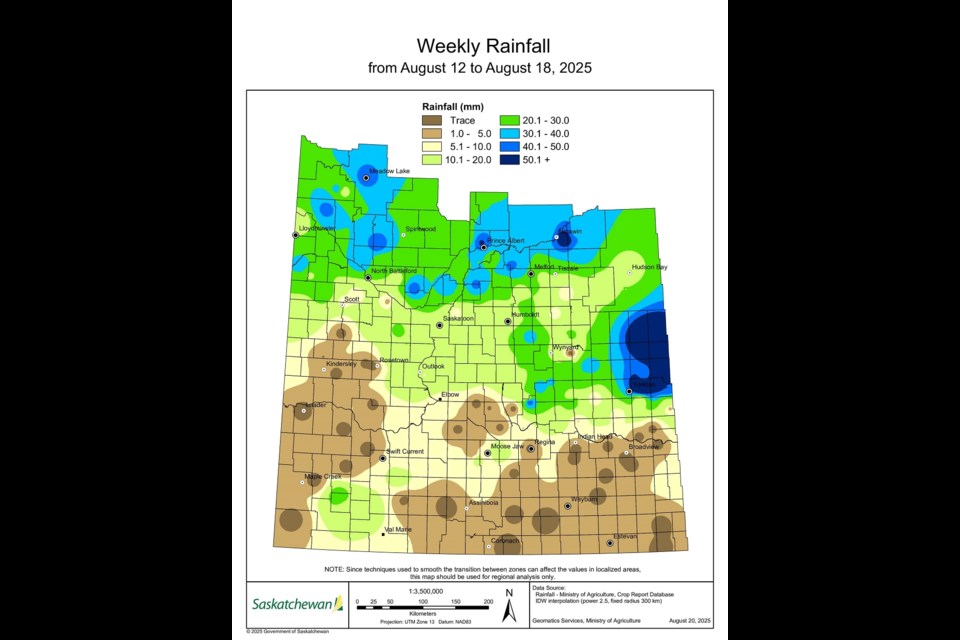Combines didn't see much action last week due to scattered rainfall, thunderstorms, and humid mornings.
The provincial crop report has harvest progress at just three per cent complete with the southwest region leading at eight per cent complete, followed by the southeast at four per cent, the east-central at two per cent, and the west-central, northeast, and northwest parts of the province each at one per cent complete.
Provincially, winter wheat is the most harvested crop at 46 per cent, then triticale at 34 per cent. For pulse crops, 17 per cent of field peas and 12 per cent of lentils have been combined. For cereals, barley is eight per cent harvested, durum at five per cent, oats at two per cent, and spring wheat at one per cent. Canola is the only oilseed crop to be harvested at one per cent combined.
Crops Extension Specialist with the Ministry of Agriculture Tyce Masich says farmers are needing higher temperatures this week so they can get more work done.
The Yorkton area recorded the most rain at 95 millimetres this past week, followed by the Swan Plain area at 78 mm, and the Calder area had 76 mm.
Topsoil moisture levels are looking very adequate. Crop land moisture is eight per cent surplus, 80 per cent adequate, 10 per cent short and two per cent very short. Hay land moisture is rated at five per cent surplus, 73 per cent adequate, 19 per cent short and three per cent very short. Pasture land moisture is six per cent surplus, 67 per cent adequate, 24 per cent short and three per cent very short.
Crop reporters were also asked to report on livestock water supplies and quality and found out the following: "Provincially, 67 per cent of reporters are saying there are no water shortages occurring or anticipated to occur for livestock producers. Reports indicated 17 per cent have moderate shortages, 14 per cent are reporting shortages to happen in the next one to two months and two per cent have severe shortages. Most producers are currently not concerned about water quality. Producers can visit their local regional office to have the quality of their livestock water sources tested."
For crop damage, Masich says it was variable from bugs to environmental damage. The report says damage was mainly due to "bertha armyworms with damage and spraying happening mainly in the central and north parts of the province. Grasshopper presence is starting to be noted across the province. Crop lodging, due to wind damage, was reported across the province along with hail damage in isolated areas. There was localized flooding reported in the southern part of the province due to heavy and fast rainfall last week."
Farmers and the public are reminded to take extra precaution during harvest season. For producers, it's ensuring equipment doesn't hit power lines and having fire extinguishers or water trucks at the ready in case of a fire. For the public, it's giving room on the road for large equipment and being patient.




